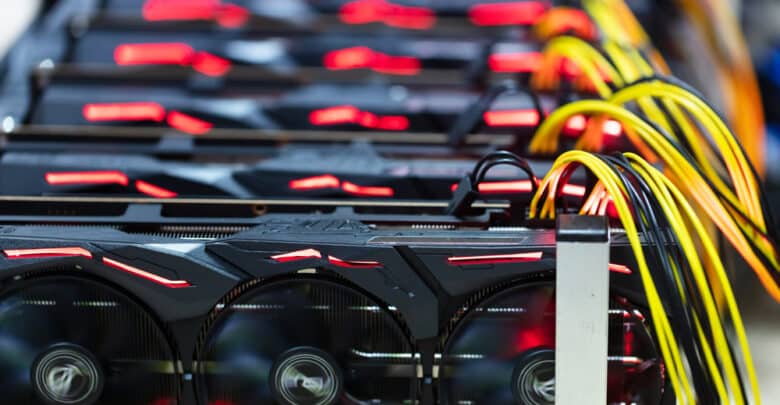What Are ASIC-Resistant Cryptocurrencies?

Cryptocurrencies have acquired a decentralized architecture meant to facilitate equitable resource allocation. Yet, as cryptocurrency has grown in demand and potential benefits have increased, mining farms have gradually taken over the sector.
As a result, substantial hash power farms have undermined the cornerstone of cryptocurrency decentralization. This has resulted in the development of ASIC-resistant cryptocurrencies. ASIC is short for application-specific integrated circuits.
Understanding ASICs
ASIC-resistant faucets are a form of digital currency meant to withstand the usage of specialist mining hardware known as ASICs. ASICs are customized hardware devices created exclusively for mining cryptocurrencies in the setting of cryptocurrency mining.
ASICs are more productive in mining cryptocurrencies than general-purpose CPUs and GPUs, which implies that miners using ASICs can mine more cryptocurrency than those using CPUs or GPUs. As a result, mining power has been centralized in the hands of a few major mining pools, rendering it more challenging for smaller miners to participate.
Several cryptocurrencies incorporate mining algorithms impervious to ASICs to circumvent this centralized control. Some methods need enormous quantities of memory or other resources, making practical mining by ASICs challenging or unattainable. This is intended to make mining more accessible to smaller miners while also preventing mining power from becoming consolidated in the hands of a few large companies.
Drawbacks of ASIC Mining Machines
Unfortunately, ASIC mining devices have a drawback. First and foremost, these instruments are too costly, particularly for the typical miner. Second, since modifications in crypto algorithms may quickly make earlier ASIC layouts worthless, the investment’s return is variable. Many claims that only Chinese corporations that earn from making and marketing such instruments benefit from ASIC machines.
What are ASIC-Resistant Cryptocurrencies?
ASIC-resistant coins employ various methods that render it hard or impossible for ASICs to mine them efficiently. These algorithms often need much memory or processing power, which ASICs are not designed to provide. An ASIC machine gets its power from numerous parallel and sequential threads coded on a chip, which takes up a lot of spatial context on the device. If the program does not provide enough space, the ASIC cannot accelerate the operation, leading to an impairment of efficiency.
It is also vital to remember that ASIC machines may be created to mine any currency, irrespective of the algorithm. Similarly, it is feasible to block ASIC devices from mining by making proper adjustments to the algorithm. If no ASIC computers exist for a certain currency, or if these devices are ineffective, the coin is considered ASIC-resistant.
Working of ASIC-Resistant Cryptocurrencies
Now let us understand how ASIC leads to decentralization. ASIC-resistant cryptocurrencies, on the contrary, are intended to be mined utilizing only CPUs and GPUs, making participation more approachable to smaller miners. This is accomplished by employing memory-hard mining algorithms, which means they need an enormous memory capacity to mine successfully, rendering the usage of ASICs more challenging.
Consequently, crypto mining has become monopolized, with only some mining firms contributing considerable hash power for the whole network. These massive mining farms establish a monopoly and hold the core cryptosystem captive since the network is dependent on some large mining farms to keep up with the hash rate that maintains the network securely.
The fundamental aim of introducing ASIC-resistance innovation is to allow all of us to mine cryptocurrency and participate. ASIC-resistant mining assures that the crypto ecosystem stays decentralized and not governed by a strong few by permitting ordinary individuals with ordinary devices to share benefits. In short, anyone may mine cryptocurrencies without investing millions in ASICs.
Conclusion
Finally, ASICs are specialized hardware tailored for certain tasks, and they can mine cryptocurrencies more effectively than general-purpose computer technology.
On the other hand, ASIC resistance in a cryptocurrency’s mining algorithm can contribute to more decentralization by making mining available to a larger pool of individuals, decreasing barriers to entry, making it more difficult to monopolize mining, and making the network more immune to assaults. Moreover, improving ASIC resistance can aid in maintaining a decentralized and secure network.
Tokenhell produces content exposure for over 5,000 crypto companies and you can be one of them too! Contact at info@tokenhell.com if you have any questions. Cryptocurrencies are highly volatile, conduct your own research before making any investment decisions. Some of the posts on this website are guest posts or paid posts that are not written by Tokenhell authors (namely Crypto Cable , Sponsored Articles and Press Release content) and the views expressed in these types of posts do not reflect the views of this website. Tokenhell is not responsible for the content, accuracy, quality, advertising, products or any other content or banners (ad space) posted on the site. Read full terms and conditions / disclaimer.







